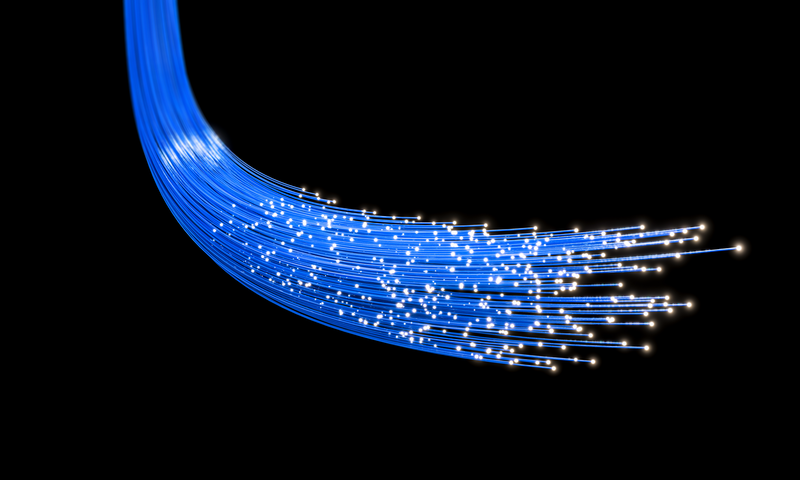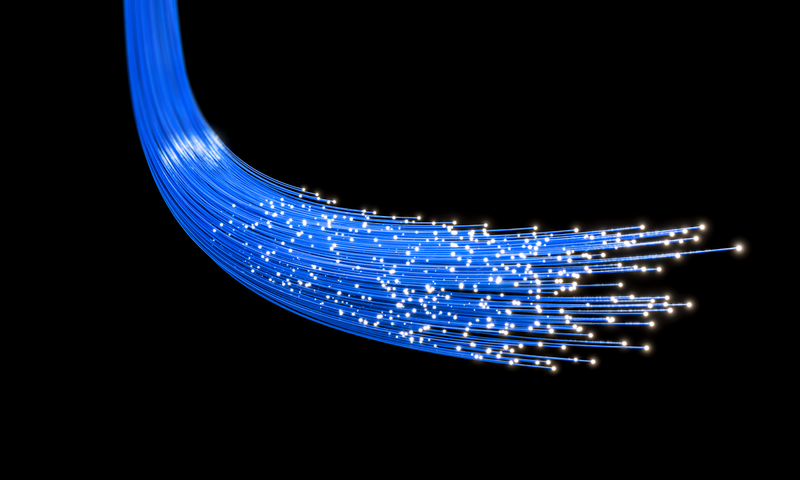Entangled Photons Maintained under New York Streets
Large-scale networks that distribute information among quantum processors or that use quantum encryption for the security of a large number of systems will require many pairs of quantum mechanically entangled photons per second. Sending these photons reliably through existing commercial fiber-optic communication lines is a challenge, given the fragility of entanglement. Now researchers have sent 20,000 such photons per second down a 34-km-long section of a New York fiber-optic network with a fidelity of 99% [1]. They sent these photons continuously for two weeks without the frequent recalibrations needed in previous systems with lower photon rates. The researchers say that their results are an important step toward the commercialization of quantum networks.
Entangled photons have previously been distributed between distant parties using commercial fiber optics and have even been sent to and from an orbiting spacecraft (see Viewpoint: Paving the Way for Satellite Quantum Communications). However, for routine use of applications involving networks of computers, for example, the distribution needs to have a high rate, high fidelity, and high uptime (time during which the system is operating rather than shut down for calibration or other reasons).
One of the challenges with optical fibers is that they suffer stresses along their lengths from vibrations, bending, and fluctuations in pressure and temperature. Those stresses can disturb photon entanglement, so many previous demonstrations have used a relatively robust type of entanglement where one member of the pair is slightly delayed in time. But this type of entanglement can also be harder to measure than others. Polarization-based entanglement is easier to measure and process in potential optical quantum computers but is more sensitive to the disturbances of optical fibers.
A team led by Mehdi Namazi, cofounder of New York-based start-up Qunnect, set out to produce a high-throughput, high-fidelity system using polarization entanglement. Qunnect’s GothamQ test bed is a 34-km loop of leased commercial fiber buried beneath the streets of New York City. Like any commercial fiber-optic network, GothamQ had sources of stress on the fibers that were impossible to identify, let alone isolate and mitigate. So the researchers had to devise a way to compensate for them.
The team’s first step was to measure the drift in the polarization direction for photons of 90 different wavelengths in the range 1260–1350 nanometers (nm), which brackets 1300 nm, a telecommunications standard wavelength. The researchers also took measurements at four transmission distances—0, 34, 69, and 102 km (by sending the photons zero, one, two, and three times around the loop). As expected, passage through the fiber rotated the photons’ polarization directions in ways that varied over time and that depended on wavelength. However, Namazi says that the team was surprised at how sensitive the polarization was to time-dependent effects and to wavelength variations, since no one had previously made such detailed measurements.
The researchers generated the entangled photon pairs by illuminating a rubidium vapor. The vapor produced pairs including a 795-nm photon—which was measured locally—and a 1324-nm photon that was transmitted into the optical fiber. The demonstration involved alternately sending entangled 1324-nm photons and sending streams of unentangled, “classical,” 1324-nm photons into the fiber network. These classical photons had a known polarization, and when they emerged from GothamQ, the rotation of their polarization was measured. This information was then used to rotate the polarization of the 1324-nm entangled photons, compensating for the polarization rotation that they had experienced.
For their demonstration, the Qunnect researchers used a single circuit of the 34-km GothamQ loop. They ran their scheme continuously for 15 days and achieved an uptime of 99.84% and a compensation fidelity of 99% for entangled photons transmitted at a rate of about 20,000 per second. With half a million photons per second, the fidelity was nearly 90%.
There are no previous similar efforts with which to compare these results, but the duration, hands-free nature, and uptime of Qunnect’s demonstration impressed Michal Hajdušek, who studies quantum networks and their architectures at Keio University in Japan. The work “represents a significant step toward deploying a quantum network in the real world,” he says. For example, he says that recalibration or realignment can reduce uptime by up to 20%.
–Charles Day
Charles Day is a Senior Editor for Physics Magazine.
References
- A. N. Craddock et al., “Automated distribution of polarization-entangled photons using deployed New York City fibers,” PRX Quantum 5, 030330 (2024).







